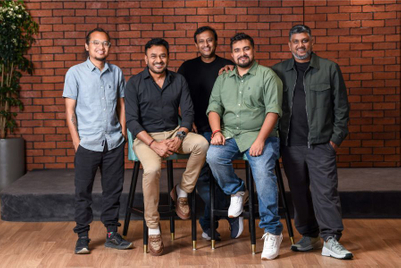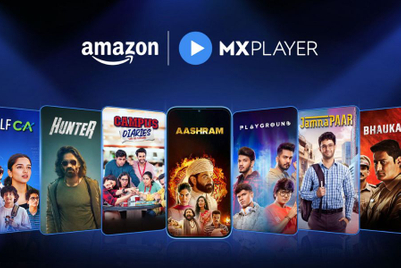.jpg&h=570&w=855&q=100&v=20250320&c=1)
The media and entertainment (M&E) industry in India, valued at nearly INR 3 lakh crore, is growing faster than the country’s overall economy, according to Sanjay Jaju, Secretary at the Ministry of Information and Broadcasting (MIB). Speaking at the 19th India Digital Summit (IDS), Jaju highlighted the sector’s transformative journey, emphasising digital innovation as a key driver.
Organised by the Internet and Mobile Association of India (IAMAI), in collaboration with the Ministries of Electronics and Information Technology (MeitY) and MIB, the two-day IDS 2025 event in New Delhi brought together industry leaders, government officials, and stakeholders to discuss the future of India’s digital ecosystem.
The Federation of Indian Chambers of Commerce and Industry (FICCI) and EY's recent report, Reinvent: India’s Media & Entertainment Sector Is Innovating for the Future, revealed the M&E sector grew by 8% in 2023, reaching INR 2.3 trillion ($27.9 billion)—21% higher than pre-pandemic levels in 2019.
Digital media and online gaming emerged as the fastest-growing segments, collectively contributing INR 122 billion of the INR 173 billion annual growth. Digital platforms have significantly expanded their share of the M&E pie, climbing from 20% in 2019 to 38% in 2023. Experiential media, including live events, online gaming, and outdoor advertising, also saw robust growth, expanding by 18%. However, television, long considered a cornerstone of India’s M&E landscape, reported a marginal 2% decline in 2023.
Jaju highlighted several government-led initiatives aimed at fostering innovation and addressing industry challenges. These include the Indian Institute of Creative Technologies and the upcoming Create in India Challenge during the Waves Summit in February 2025.
The inaugural Create in India Challenge featured 25 competitions across disciplines such as animation, filmmaking, gaming, and music. “The confluence of art and technology is pivotal for the future of M&E,” Jaju noted, adding that creators from across India have shown promising participation in such initiatives.
However, he acknowledged global challenges affecting the sector, including AI-driven algorithmic biases, inequitable creator returns, and concerns about content quality and copyright violations. He also reiterated the government’s commitment to combating piracy through amendments to the Cinematographic Act.
Central to ongoing discussions is the proposed Broadcasting Services Regulation Bill, which could bring YouTubers, Instagram influencers, and other digital creators under MIB’s regulatory purview. The draft Bill, initially circulated among select stakeholders in July 2024, had raised concerns about press freedom and creative autonomy.
If passed, the Bill would require creators exceeding a certain follower threshold to register with a three-tier regulatory structure and create content evaluation committees to pre-screen material before publication. Social media companies refusing to comply with data-sharing requirements could face criminal liability, and news-focused accounts would need to formally notify the government of their existence within a month of the Bill’s enactment. Advertising networks, termed as “advertising intermediaries,” would also be included in the regulatory framework, potentially increasing compliance burdens for brands and agencies.
The proposed regulations elicited mixed reactions from stakeholders. While some see it as a step towards addressing misinformation and content quality issues, others view it as a potential threat to creative and press freedoms.
Jaju admitted that the sector grapples with challenges such as weak news quality, misinformation, and the need for updated copyright laws. “There are algorithmic biases in AI-driven recommendations and inequitable returns for creators on digital platforms,” he stated. “Despite these hurdles, the sector has shown resilience and innovation.”
India’s ambition to become a global M&E leader is underscored by its focus on digital innovation and international partnerships. The IDS 2025 event, themed Bharat's Digital Path—Empowering Future Innovators, has drawn support from major players, including Amazon, PhonePe, Paytm Ads, and AWS.
India’s M&E sector has consistently outpaced its global counterparts, with experiential media driving engagement and digital platforms reshaping content consumption. Online gaming, for instance, has seen a meteoric rise, while traditional formats like television face headwinds.
However, experts warn that overregulation could stifle innovation. “A balanced approach to regulation is critical,” said a senior digital marketing consultant. “The government must ensure that reforms do not discourage creators or alienate global platforms.”

At the IDS 2025, Sonal Kabi, director and head of marketing at Prime Video India, shared insights on storytelling, marketing, and the global impact of Indian content during the panel discussion, ‘Amplifying voices: How India’s streaming platforms are shaping the future of entertainment’. Moderated by Archita Kashyap, the panel also featured Aloke Majumder, VP of Ttechnology at Hoichoi, and Saurabh Srivastava, COO of digital business at Shemaroo Entertainment.
Discussing story selection, Kabi stated, “We ask ourselves, has it been said before? Is there a fresh dimension here? The creator’s passion in telling the story is crucial. If we’re invested without the trappings of music or actors, we know we have a winner.”
She emphasised the evolving tastes of viewers, who now appreciate diverse genres and languages, often consuming varied content in a single day. On marketing, she remarked, “If the campaign isn’t entertaining, it’s not a great campaign. Bold and disruptive ideas excite audiences, even from a hoarding or a short teaser.”
As the M&E sector navigates a rapidly evolving landscape, collaboration between the government and industry stakeholders will be key to ensuring sustainable growth. Initiatives like Create in India and regulatory reforms aim to address critical issues while fostering innovation.
Jaju remains optimistic about India’s potential to lead globally. “We’ve been getting very good participation from creators across the country,” he said, expressing confidence in the sector’s ability to overcome challenges.
India’s M&E journey underscores a critical question for policymakers, businesses, and creators alike: How can innovation and regulation coexist to shape the future of media in one of the world’s fastest-growing economies?


.jpg&h=334&w=500&q=100&v=20250320&c=1)
.jpg&h=334&w=500&q=100&v=20250320&c=1)

.jpg&h=334&w=500&q=100&v=20250320&c=1)


.jpg&h=334&w=500&q=100&v=20250320&c=1)



.jpg&h=268&w=401&q=100&v=20250320&c=1)



.jpg&h=268&w=401&q=100&v=20250320&c=1)
.png&h=268&w=401&q=100&v=20250320&c=1)


